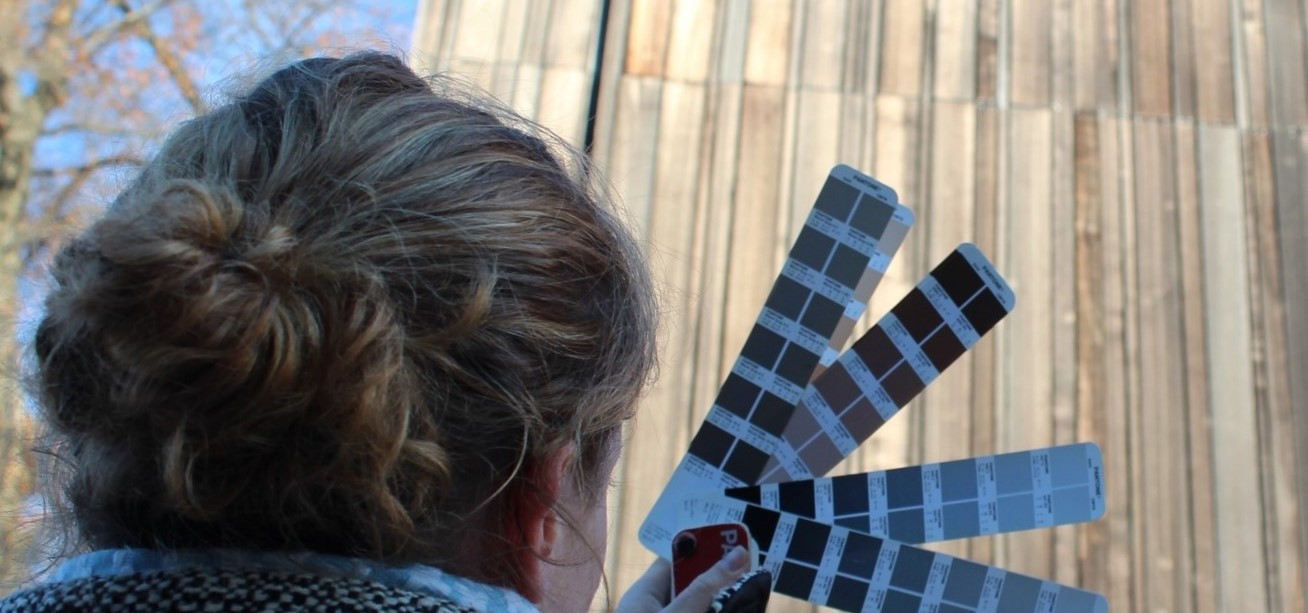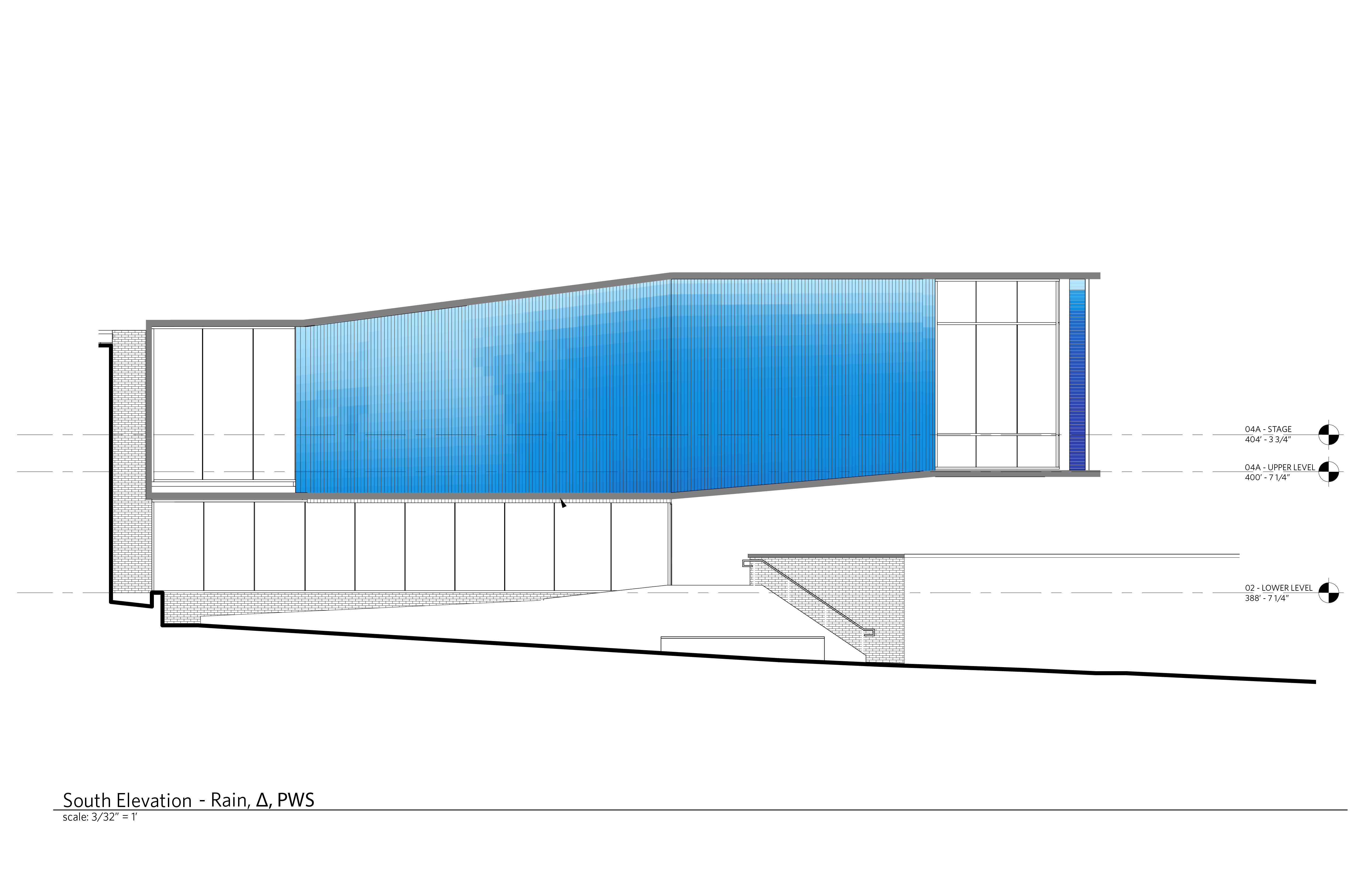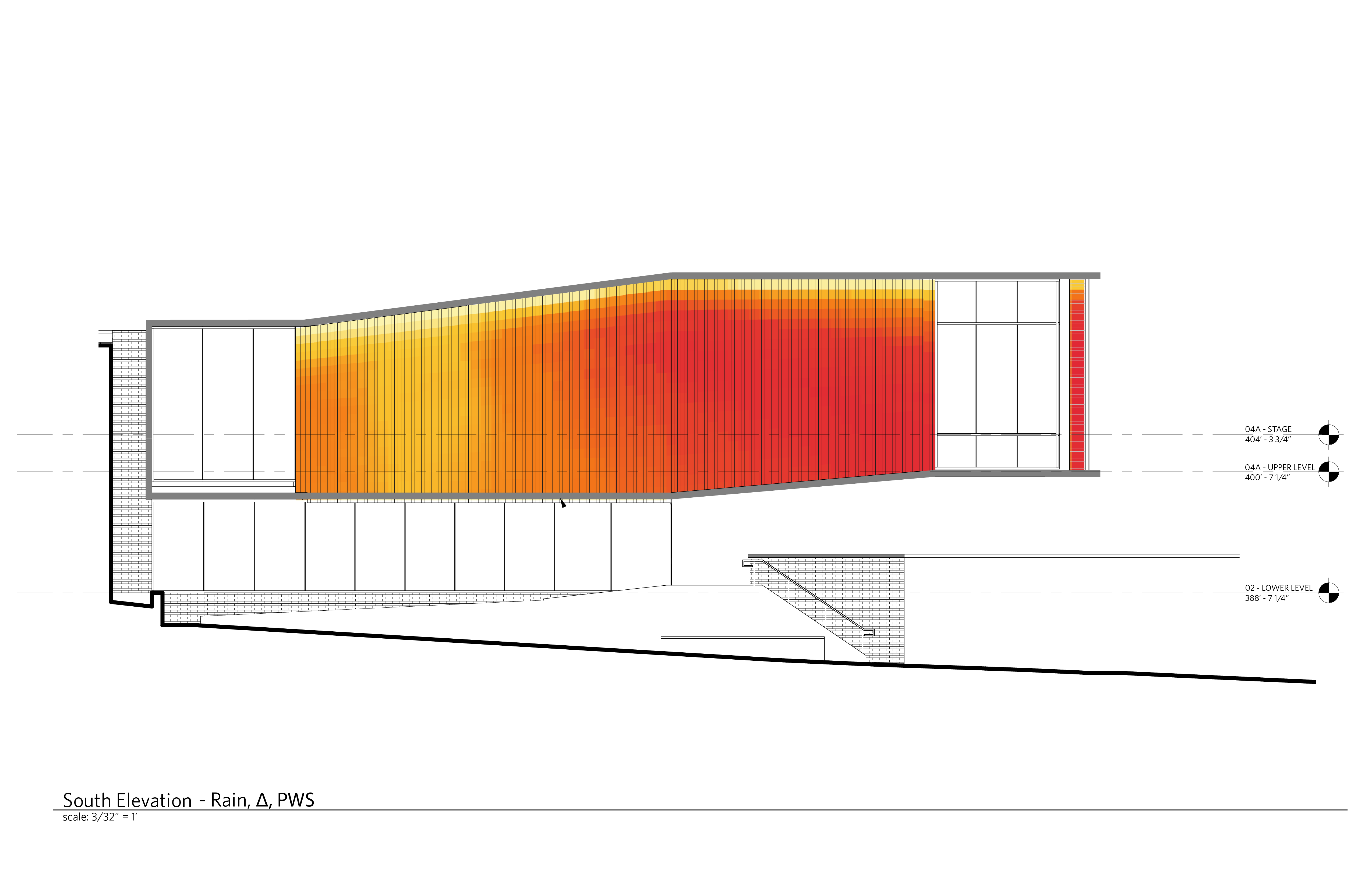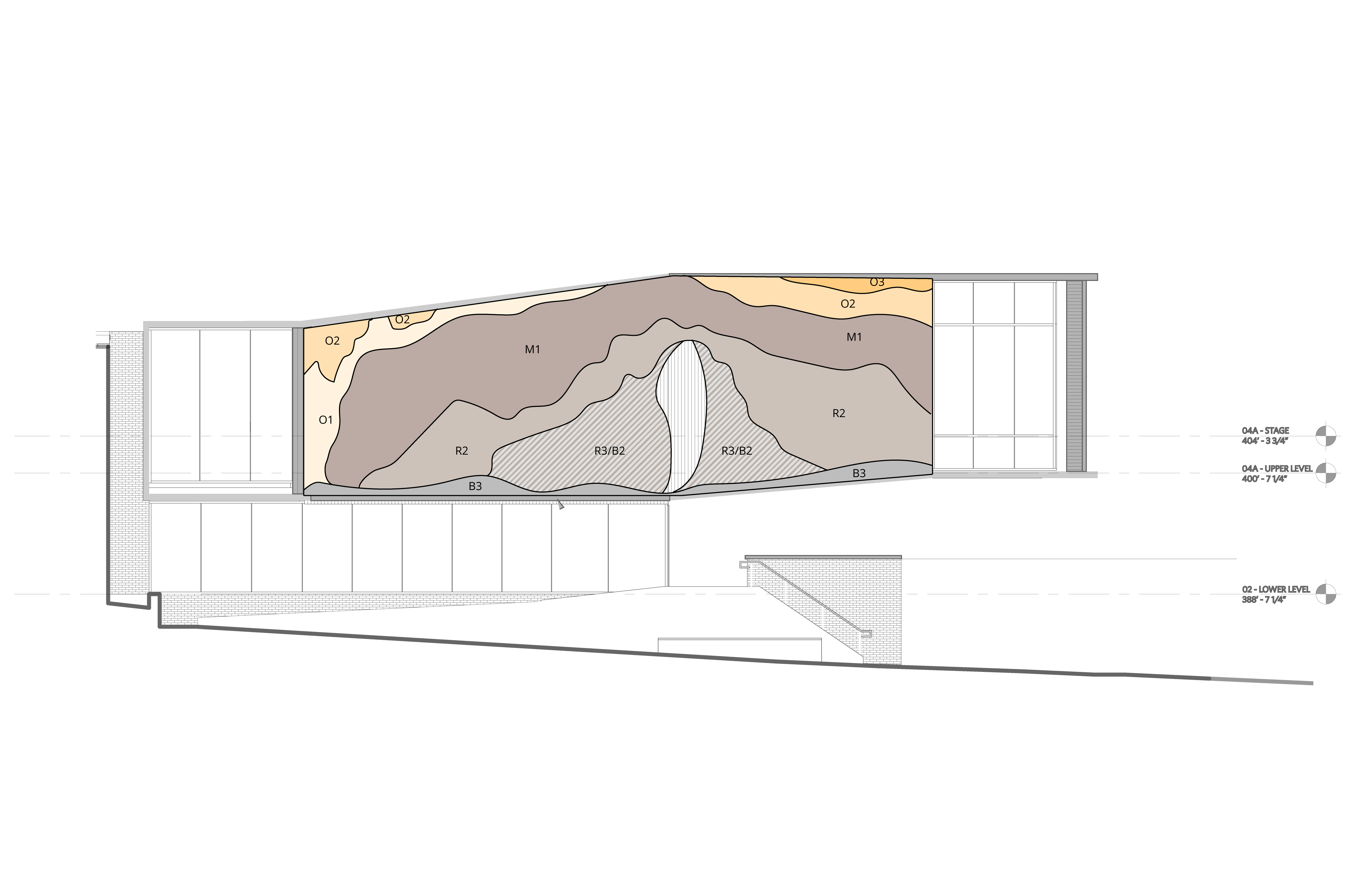Can we predict the weathering of wood facades by modeling the relationship between climate, ecological context, material properties, and design decisions?
As an inherently low embodied carbon material, wood is an environmentally excellent choice for envelope systems. However, wood also experiences dramatic changes in color and aesthetic effect over time as it weathers. Uncertainty around the long-term aesthetic performance of wood can frequently scare designers and clients away from using wood on building exteriors.
To design for intentional weathering on the University of Washington North Campus Housing, KieranTimberlake created a proof-of-concept tool to predict the expected weathering patterns. The tool was validated and further developed after field surveying three previous KieranTimberlake projects: the Loblolly House, Sidwell Friends School, and Sidwell Friends Quaker Meeting House and Arts Center.
Observed material weathering, Sidwell Friends Quaker Meeting House and Arts Center.
UNDERSTANDING WOOD WEATHERING MECHANISMS
Traditional research on wood weathering has occurred primarily in laboratory conditions on individual wooden boards. The two primary means of weathering are exposure to UV radiation and driven water. On a building, these translate to exposure to sunlight and wind-driven rain. Over time, wood usually progresses first to a darker shade of brown, followed by a light or dark grey, depending on the exposure conditions. UV light primarily works to initiate a chemical reaction in lignin, making wood darker brown. On the other hand, rain removes lignin, leaching out the brown and leaving behind silvery cellulose. Exposure to both simultaneously works to accelerate the processes at a deeper level within the wood, while also creating a more substantial color change.
Previously published research has identified that exposure to higher temperatures and humidity can accelerate the weathering process. However, these studies failed to capture how these mechanics interact with architecture—specifically at the level of building massing and the building detail—which create additional conditions due to stagnant moisture, chemical leaching, and differential temperature and humidity conditions across a single board.
Furthermore, published research does not include the more complex variables of a larger wooden envelope assembly: specifically, what happens when the wood cellular structure is interrupted by a “plug” caused by a fastener? How does the orientation of a board change the weathering mechanisms? What level of end grain protection or exposure might change the rate of lignin migration within a board?
FIELD SURVEYING TECHNIQUES
Measuring the coloration of wood on a building facade has significantly more limitations than measuring wood in a laboratory setting, as sunlight, sky conditions, and weather can all influence the color of the available light, which, in turn, changes the color captured in a photograph or by a scanner. We created a field methodology to evaluate wood coloration based on color-matching to the Pantone color palette on a 1'x1' grid applied over each building elevation. To reduce any potential bias based on the angle of observation, three researchers independently identified the wood color on each facade from different observation locations. Around points of interest or architectural detail, such as flashing, projections, or fasteners, the researchers used a 6” grid to capture any differentiation from a broader field color condition. In general, the researchers agreed on the majority of the wood colors. These field surveys were then brought back to compare to the colors predicted by the digital model.
Generally, the digital model predicted the “field condition” of the wood color, but not the specific detail discoloration, located near specific architectural conditions such as sills, flashing details, and fasteners. The current evolution of the predictive model looks to incorporate these architectural tectonics as potential outlier conditions that cause differential mechanics in the weathering process.
Driving rain elevations simulation, Sidwell Friends Quaker Meeting House and Arts Center.
Solar radiation incidence simulation, Sidwell Friends Quaker Meeting House and Arts Center.
Field notes on observed color, Sidwell Friends Quaker Meeting House and Arts Center.







